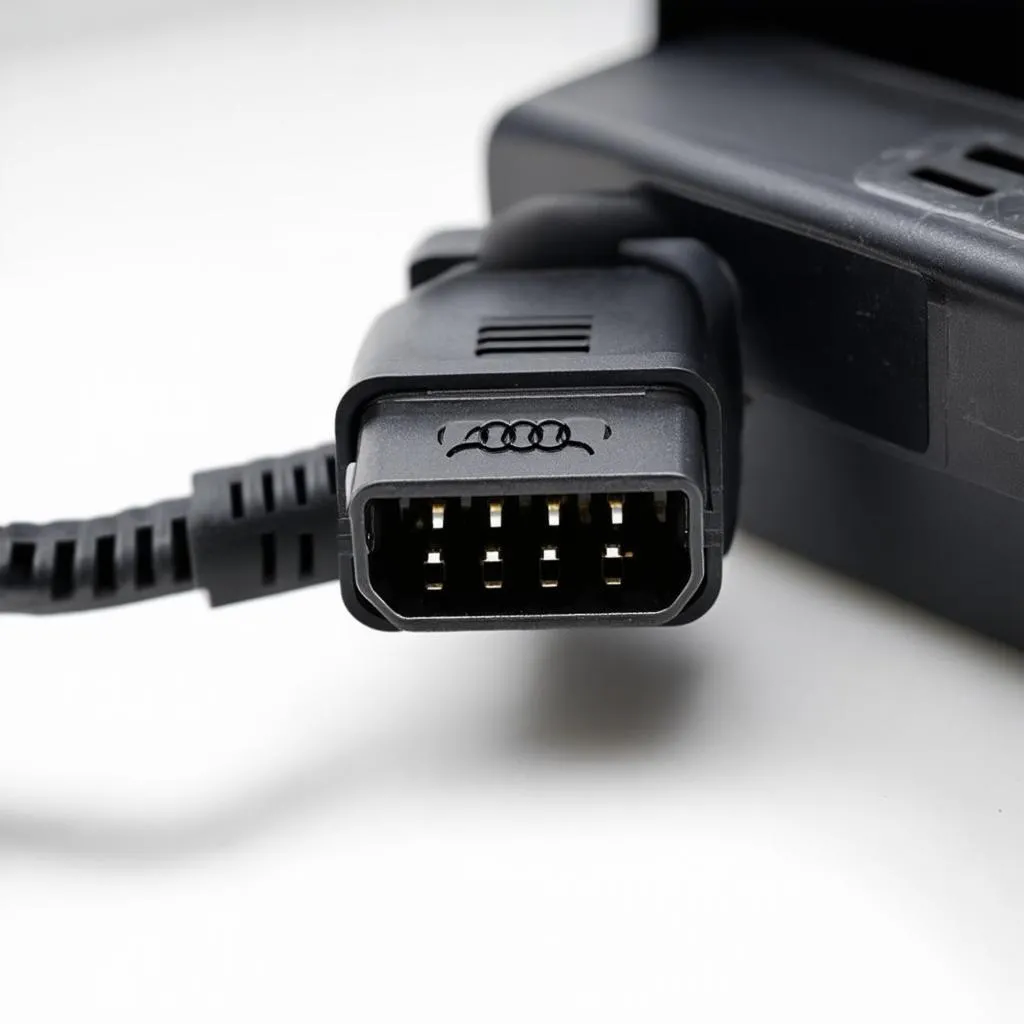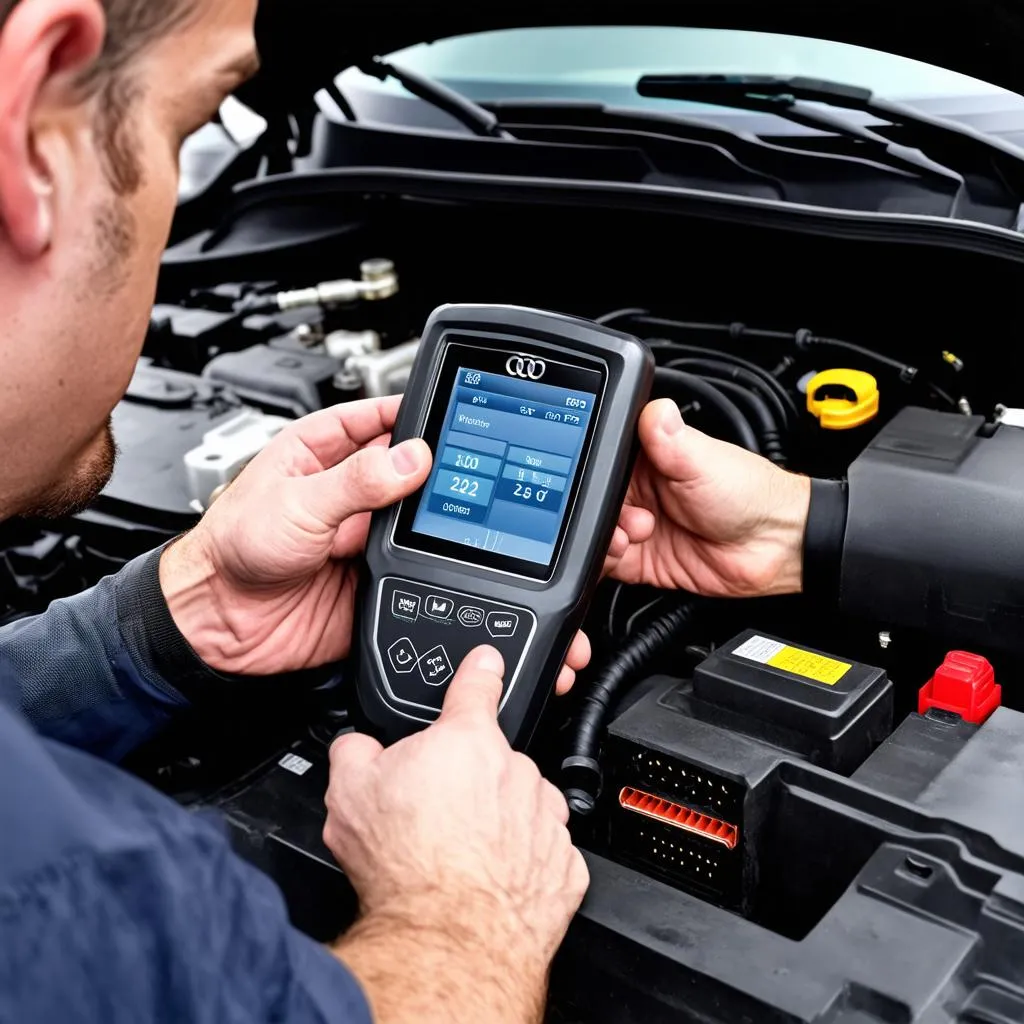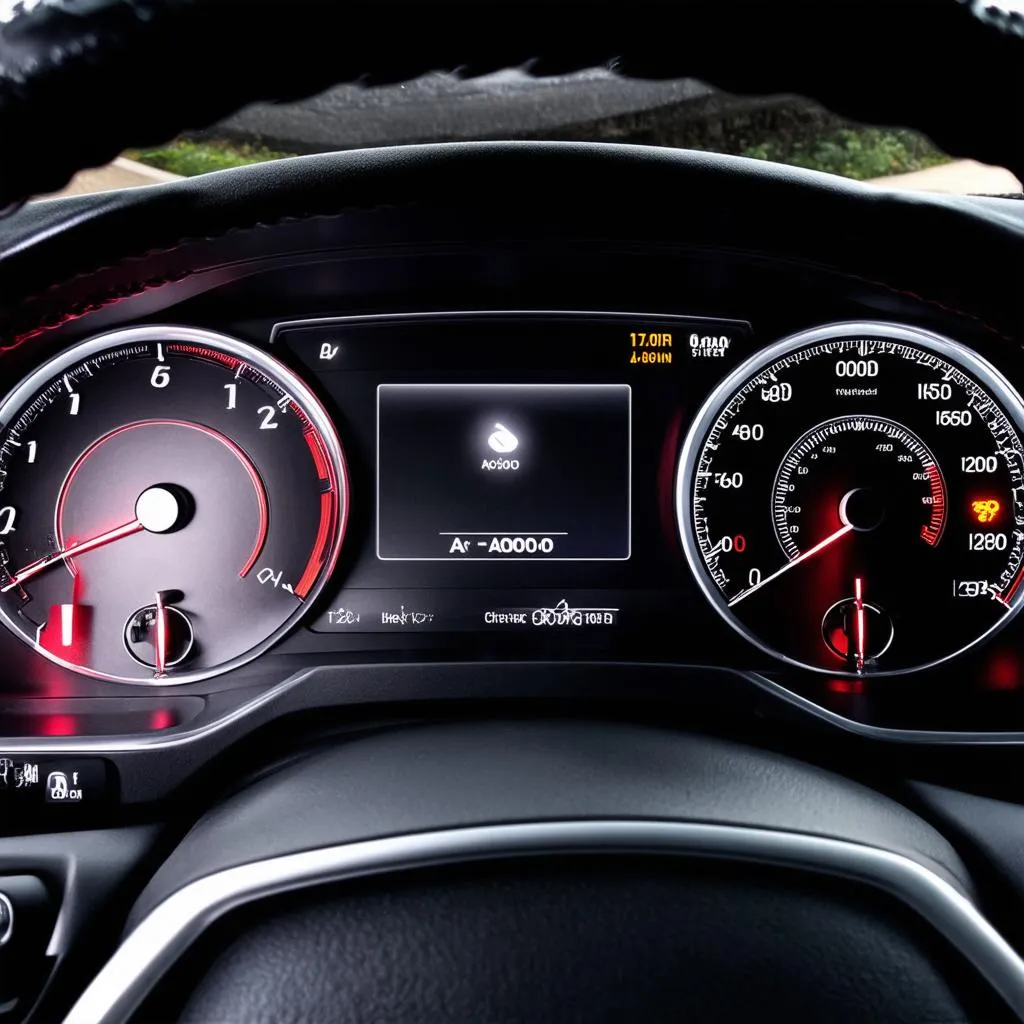Have you ever wondered what that little port on your Audi A3 is for? That’s the OBD port, short for On-Board Diagnostics. It’s a gateway to a world of information about your car’s health, and it’s super useful for diagnosing issues and even improving your car’s performance.
What is the Audi A3 Obd Plug?
The OBD plug on your Audi A3 is a standardized connector that allows you to access and communicate with your car’s onboard computer system. It’s basically like a USB port for your car, allowing you to connect a variety of diagnostic tools and devices. Imagine it as a window into the soul of your car, letting you see what’s happening under the hood and how things are running. It’s a vital tool for anyone who wants to troubleshoot problems, keep their car running smoothly, or even enhance its performance.
Where is the OBD Plug Located in an Audi A3?
This is a common question that often pops up when people are trying to locate the OBD plug in their Audi A3. Many people think it’s a hidden secret, but it’s actually in a pretty straightforward location. The OBD plug on your Audi A3 is typically located under the dashboard, near the steering column, often on the driver’s side. It’s usually a small, rectangular port with 16 pins.
You can refer to your Audi A3’s owner’s manual for a more precise location. If you can’t find it, don’t hesitate to contact a certified Audi mechanic for assistance.
Why is the OBD Plug Important?
The OBD port is like a secret handshake between your Audi A3 and the world of diagnostics. It’s a key to unlocking a wealth of information about your car’s health. Here are a few reasons why it’s important:
- Troubleshooting Problems: If your Audi A3 is acting up, the OBD plug can help pinpoint the issue. Diagnostic tools can read fault codes stored in your car’s computer, giving you clues about what might be wrong.
- Monitoring Performance: The OBD plug can provide real-time data on your engine’s performance, fuel consumption, and more. This data can help you understand how your car is running and identify areas for improvement.
- Resetting Warning Lights: If your Audi A3 has a warning light on the dashboard, a diagnostic tool can often reset the light after the issue is addressed.
- Customizing Performance: OBD tools can be used to modify your Audi A3’s performance parameters, like adjusting the throttle response or optimizing fuel efficiency.
What are OBD Scanners for European Cars?
OBD scanners are specialized devices that connect to the OBD port and allow you to communicate with your car’s computer system. These scanners can be used to read and clear fault codes, monitor real-time data, and even adjust certain performance parameters.
For European cars, like your Audi A3, specialized OBD scanners are needed. These scanners are designed to understand the unique protocols and communication languages used by European car manufacturers.
Why Should I Use a Dealer Scanner for My Audi A3?
Dealer scanners are a type of OBD scanner designed to access the full range of diagnostic information and capabilities specific to your Audi A3. These scanners are typically used by Audi dealerships, but they are also available for purchase by individuals.
Here are some benefits of using a dealer scanner for your Audi A3:
- More Comprehensive Diagnostics: Dealer scanners provide access to a wider range of diagnostic information and fault codes than generic OBD scanners. They can often access manufacturer-specific codes and data that are not available through other scanners.
- Advanced Features: Dealer scanners often have advanced features that are not available in generic OBD scanners, such as the ability to perform advanced tests, reprogram modules, and access more detailed vehicle information.
- Compatibility with Audi A3 Models: Dealer scanners are specifically designed to work with Audi A3 models, ensuring that you get the most accurate and reliable diagnostic information.
What are some Common Audi A3 Obd Plug Issues?
The OBD port on your Audi A3 can occasionally encounter issues. These issues can prevent you from connecting a diagnostic tool and reading valuable information about your car. Some common issues include:
- Loose or Damaged Connection: A loose connection or damaged pins in the OBD port can prevent a diagnostic tool from establishing a connection.
- Corroded Contacts: Corrosion on the OBD port contacts can also hinder a connection. This is more common in vehicles that are frequently exposed to the elements.
- OBD Port Malfunction: In some cases, the OBD port itself might be malfunctioning. This could be due to a short circuit or other internal problems.
- Incorrectly Installed Diagnostic Tool: If a diagnostic tool is not properly connected or if the wrong type of tool is used, it might not be able to communicate with your Audi A3’s computer system.
How to Troubleshoot Audi A3 Obd Plug Issues
If you’re facing issues with your Audi A3’s OBD port, here are some troubleshooting steps you can take:
- Check the Connection: Make sure that the diagnostic tool is securely plugged into the OBD port and that there are no loose connections.
- Inspect for Corrosion: Check the OBD port contacts for signs of corrosion. If you see any corrosion, try cleaning the contacts with a soft brush and some contact cleaner.
- Verify Compatibility: Make sure that the diagnostic tool you’re using is compatible with your Audi A3 model year.
- Consult a Mechanic: If you’re still unable to connect to your Audi A3’s computer system, consider consulting a certified mechanic. They can diagnose the issue and help you find a solution.
Is there a connection between Audi A3 Obd Plug issues and Feng Shui?
While there isn’t a direct connection between Audi A3 Obd Plug issues and Feng Shui, some people believe that the placement and condition of your car’s OBD port can affect its overall energy flow. This concept aligns with the idea that harmonious energy flow is essential for optimal functioning and well-being.
If you’re concerned about the energy flow around your car, you could consider using Feng Shui principles to balance and enhance the positive energy around the OBD port. This could include keeping the area clean, decluttered, and free from clutter, as well as using positive affirmations to promote a harmonious connection between your car and its energy flow. However, it’s important to remember that these are spiritual beliefs, and scientific evidence supporting their effectiveness is limited.
How to Use an Audi A3 Obd Plug with a Diagnostic Tool
Once you have an OBD scanner compatible with your Audi A3, connecting it is fairly straightforward. Here are the basic steps:
- Locate the OBD Port: Find the OBD port on your Audi A3, typically located under the dashboard near the steering column.
- Plug in the Scanner: Connect the OBD scanner to the OBD port.
- Turn the Key: Turn the ignition key to the “ON” position. Some scanners may require you to start the engine.
- Follow Scanner Instructions: Refer to the instructions for your specific OBD scanner for detailed guidance.
Can You Reset Your Audi A3 Check Engine Light Through the OBD Plug?
Yes, you can reset your Audi A3 check engine light through the OBD port using a diagnostic tool. However, it’s important to understand that simply resetting the light doesn’t address the underlying issue causing the light to come on.
To properly address the check engine light, you need to first diagnose the issue using a diagnostic tool. Once you know what the problem is, you can fix it and then use the diagnostic tool to clear the code, which will turn off the check engine light.
Audi A3 Obd Plug Frequently Asked Questions
Here are some frequently asked questions about the Audi A3 OBD plug:
Q: Where is the OBD plug located on my Audi A3?
A: The OBD plug on your Audi A3 is typically located under the dashboard, near the steering column, often on the driver’s side.
Q: What kind of diagnostic tool should I use for my Audi A3?
A: You can use a generic OBD scanner, but for more comprehensive diagnostics, a dealer scanner designed specifically for Audi vehicles is recommended.
Q: Can I use the OBD plug to improve my Audi A3’s performance?
A: Yes, some OBD tools allow you to modify performance parameters, such as adjusting the throttle response or optimizing fuel efficiency. However, proceed with caution and always consult with a mechanic before making significant changes.
Q: What are some common Audi A3 Obd Plug issues?
A: Common issues include loose or damaged connections, corroded contacts, OBD port malfunctions, and incorrectly installed diagnostic tools.
Q: Can I reset my Audi A3 check engine light using the OBD plug?
A: Yes, but only after addressing the underlying issue that caused the light to come on. Resetting the light without fixing the problem will only temporarily hide the issue.
What else can I learn about Audi A3 Obd Plugs?
To learn more about Audi A3 OBD plugs, including how to locate them, troubleshoot issues, and use them with diagnostic tools, consider checking out these helpful resources on our website:
- OBD Case
- 1998 Audi A3 OBD Port Location
- Audi OBD Code P0171
- 2016 Audi A3 OBD-II Gauge
- 2009 Audi A3 OBD Location
You can also find additional articles and resources on our website related to Audi A3 OBD plugs and other automotive topics.
Want to Learn More?
If you’re interested in learning more about how to use diagnostic tools, unlock the full potential of your Audi A3, or enhance its performance, we can help! We offer professional support and guidance. Contact us via WhatsApp: +84767531508 for assistance with installing and using diagnostic tools, or to get expert advice from our team of certified automotive technicians.
Conclusion
The OBD plug on your Audi A3 is a valuable tool that can help you keep your car running smoothly. By understanding its functions and using a compatible diagnostic tool, you can gain valuable insights into your car’s health and performance. Don’t hesitate to ask if you have any questions! We’re always here to help.
 Audi A3 OBD Plug Location
Audi A3 OBD Plug Location
 Using an OBD Scanner on an Audi A3
Using an OBD Scanner on an Audi A3
 Audi A3 Dashboard with Check Engine Light
Audi A3 Dashboard with Check Engine Light